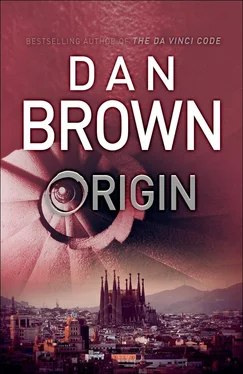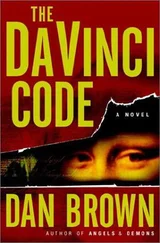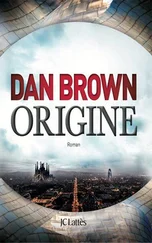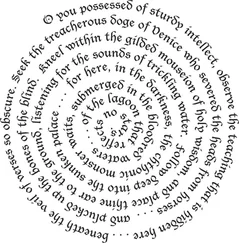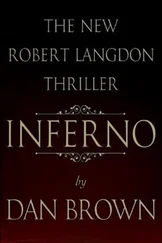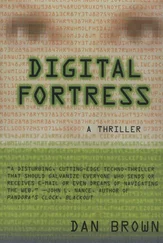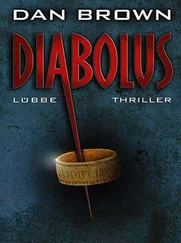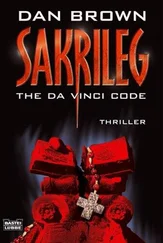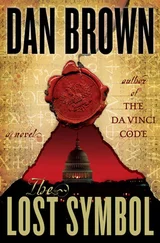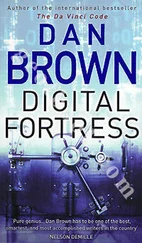“Tonight?!” Köves demanded. “He said it would be a month !”
“Yes,” Valdespino said. “He lied.”
Winston’s friendly voice reverberated in Langdon’s headset. “Directly in front of you, Professor, you will see the largest painting in our collection, though most guests do not spot it right away.”
Langdon gazed across the museum’s atrium but saw nothing except a wall of glass that looked out over the lagoon. “I’m sorry, I think I may be in the majority here. I don’t see a painting.”
“Well, it is displayed rather unconventionally,” Winston said with a laugh. “The canvas is mounted not on the wall, but rather on the floor .”
I should have guessed , Langdon thought, lowering his gaze and moving forward until he saw the sprawling rectangular canvas stretched out across the stone at his feet.
The enormous painting consisted of a single color — a monochrome field of deep blue — and viewers stood around its perimeter, staring down at it as if peering into a small pond.
“This painting is nearly six thousand square feet,” Winston offered.
Langdon realized it was ten times the size of his first Cambridge apartment.
“It is by Yves Klein and has become affectionately known as The Swimming Pool .”
Langdon had to admit that the arresting richness of this shade of blue gave him the sense he could dive directly into the canvas.
“Klein invented this color,” Winston continued. “It’s called International Klein Blue, and he claimed its profundity evoked the immateriality and boundlessness of his own utopian vision of the world.”
Langdon sensed Winston was now reading from a script.
“Klein is best known for his blue paintings, but he is also known for a disturbing trick photograph called Leap into the Void , which caused quite a panic when it was revealed in 1960.”
Langdon had seen Leap into the Void at the Museum of Modern Art in New York. The photo was more than a little disconcerting, depicting a well-dressed man doing a swan dive off a high building and plunging toward the pavement. In truth, the image was a trick — brilliantly conceived and devilishly retouched with a razor blade, long before the days of Photoshop.
“In addition,” Winston said, “Klein also composed the musical piece Monotone-Silence , in which a symphony orchestra performs a single D-major chord for a full twenty minutes.”
“And people listen ?”
“Thousands. And the one chord is just the first movement. In the second movement, the orchestra sits motionless and performs ‘pure silence’ for twenty minutes.”
“You’re joking, right?”
“No, I’m quite serious. In its defense, the performance was probably not as dull as it might sound; the stage also included three naked women, slathered in blue paint, rolling around on giant canvases.”
Although Langdon had devoted the better part of his career to studying art, it troubled him that he had never quite learned how to appreciate the art world’s more avant-garde offerings. The appeal of modern art remained a mystery to him.
“I mean no disrespect, Winston, but I’ve got to tell you, I often find it hard to know when something is ‘modern art’ and when something is just plain bizarre.”
Winston’s reply was deadpan. “Well, that is often the question, isn’t it? In your world of classical art, pieces are revered for the artist’s skill of execution — that is, how deftly he places the brush to canvas or the chisel to stone. In modern art, however, masterpieces are often more about the idea than the execution. For example, anyone could easily compose a forty-minute symphony consisting of nothing but one chord and silence, but it was Yves Klein who had the idea.”
“Fair enough.”
“Of course, The Fog Sculpture outside is a perfect example of conceptual art. The artist had an idea — to run perforated pipes beneath the bridge and blow fog onto the lagoon — but the creation of the piece was performed by local plumbers.” Winston paused. “Although I do give the artist very high marks for using her medium as a code.”
“ Fog is a code?”
“It is. A cryptic tribute to the museum’s architect.”
“Frank Gehry?”
“Frank O. Gehry,” Winston corrected.
“Clever.”
As Langdon moved toward the windows, Winston said, “You have a nice view of the spider from here. Did you see Maman on your way in?”
Langdon gazed out the window, across the lagoon, to the massive black widow sculpture on the plaza. “Yes. She’s pretty hard to miss.”
“I sense from your intonation that you’re not a fan?”
“I’m trying to be.” Langdon paused. “As a classicist, I’m a bit of a fish out of water here.”
“Interesting,” Winston said. “I had imagined that you of all people would appreciate Maman . She is a perfect example of the classical notion of juxtaposition. In fact, you might want to use her in class when you next teach the concept.”
Langdon eyed the spider, seeing nothing of the sort. When it came to teaching juxtaposition, Langdon preferred something a bit more traditional. “I think I’ll stick with the David .”
“Yes, Michelangelo is the gold standard,” Winston said with a chuckle, “brilliantly posing David in an effeminate contrapposto, his limp wrist casually holding a flaccid slingshot, conveying a feminine vulnerability. And yet David’s eyes radiate a lethal determination, his tendons and veins bulging in anticipation of killing Goliath. The work is simultaneously delicate and deadly.”
Langdon was impressed with the description and wished his own students had as clear an understanding of Michelangelo’s masterpiece.
“ Maman is no different from David ,” Winston said. “An equally bold juxtaposition of opposing archetypal principles. In nature, the black widow is a fearful creature — a predator who captures victims in her web and kills them. Despite being lethal, she is depicted here with a burgeoning egg sac, preparing to give life, making her both predator and progenitor — a powerful core perched atop impossibly slender legs, conveying both strength and fragility. Maman could be called a modern-day David , if you will.”
“I won’t ,” Langdon replied, smiling, “but I must admit your analysis gives me food for thought.”
“Good, then let me show you one final work. It happens to be an Edmond Kirsch original.”
“Really? I never knew Edmond was an artist.”
Winston laughed. “I’ll let you be the judge of that.”
Langdon let Winston guide him past the windows to a spacious alcove in which a group of guests had assembled before a large slab of dried mud hanging on the wall. At first glance, the slab of hardened clay reminded Langdon of a museum fossil exhibit. But this mud contained no fossils. Instead, it bore crudely etched markings similar to those a child might draw with a stick in wet cement.
The crowd looked unimpressed.
“Edmond did this?” grumbled a mink-clad woman with Botoxed lips. “I don’t get it.”
The teacher in Langdon could not resist. “It’s actually quite clever,” he interrupted. “So far it’s my favorite piece in the entire museum.”
The woman spun, eyeing him with more than a hint of disdain. “Oh really ? Then do enlighten me.”
I’d be happy to. Langdon walked over to the series of markings etched coarsely into the clay surface.
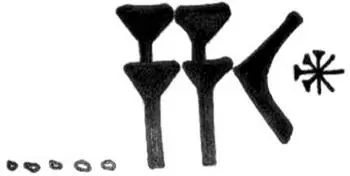
“Well, first of all,” Langdon said, “Edmond inscribed this piece in clay as an homage to mankind’s earliest written language, cuneiform.”
Читать дальше
